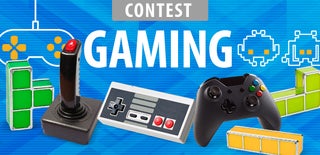Introduction: How to Build a Nintendo N64 Handheld Portable Console System
N64 emulators do not work great, expect stuttering with video, framerate issues, compatibility issues. The only way to play N64 games properly is on the original hardware; fact.
Making a handheld portable basically involves the following:
* remove all parts not needed from the motherboard.
* running the motherboard with two DC voltages via one battery source.
* wiring up a controller, screen, memory card and console all together to act as one complete unit.
What you end up with is a portable console system able to run all the games it was before modification.
The build itself can be daunting to anyone not familiar with such modding work, and would be beyond the scope of an Instructable guide as would go across many areas of learning and topics, however I have my own website with ALL the processes and guides you need to make your own system if you wish to. Armed with these guides you will learn how to complete the entire process from start to completion and even via hand-holding videos too.
There are many guides on the site, with how-to's made in easy to follow guides. Here are the main pages which cover each part of the process in details:
http://bacman.co.uk/general-modding/
The rest of this Instructable covers what I did to make the handheld portable (which anyone who has read the guides above will understand what the rest of the guide is about); which I finished building and testing yesterday, and wanted to upload to this site.
Step 1: Parts Needed for Project
HARDWARE
* I used a vacuum formed case made using 1.5mm thick styrene, from a home made mould and vacuum former; painted with textured spraypaint in black, and varnished (guides for all this on my website)
* 7" Pillow LCD screen
* 2 x Sony (or compatible) NP-F550 camcorder Li-ion battery packs; and 4 x compatible chargers (2 will be used as hosts to house the batteries on the system).
* N64 console (either PAL or NTSC format depending on your region). The screen above is PAL/NTSC so runs both formats
* Controller - I used a third party SuperPad64 controller but any other would do
* Memory card
* 2 speakers
* Stereo audio amp
* 2 x Battery holders suitable for the NP-F550 cells
* Step-down regulator for 3.3v output
* Fan to keep motherboard cool, one around 30mm is ideal, preferably a quiet one
SUPPLIES
* Hot glue sticks, solder, 1.5mm styrene, strips of pine wood for supports, superglue, small screws, flexible wires
OTHER
* Craft knife, pliers thick and thin, scissors, ruler, sandpaper, screwdrivers, Dremel and parts, soldering iron, hot glue gun, multimeter, resistor (38ohm or thereabouts).
(please refer to the www.bacman.co.uk website for guides on how to use and install the parts, regulators, etc - all details are on there)
Step 2: Install Cartridge Port Holder
I wanted the cartridge holder to show the cartridge label and be easy to insert and remove the cartridge; so lay it inside the casing, mark out where the cartridge sits and make a box area using styrene and also strips of pine wood; designed so the cartridge port itself is secured into the back of the construction for the motherboard to be connected to.
Step 3: Install Battery Holders
Separate the part of the battery charger that holds the battery in place, if the chargers (2 of the 4 you need) are not separable, cut out the parts needed and use that. Place them so they are out of fingers' way when holding the system, also space in the middle for a 2nd player port (if wanted) and vent holes for the fan which will keep the console cool enough to not overheat.
Step 4: Install Controller and Buttons
Open the controller board and trim any areas you need to, rewiring any parts necessary. Relocate the memory card port, install buttons into case with support behind (extensive guides on my website for this, and alternative methods)
Step 5: Continue Wiring Process
Connect the motherboard cartridge pins to the cartridge port, install audio amp.
Step 6: Testing Phases
It is important before closing the system to check all works. Before connecting the motherboard of the console to the metal backing of the screen, use plastic tape to provide an insulation layer to prevent shorts.
Then secure the case halves together with mini screws and finish off with a strip of black plastic tape to make the joins look nice.
Step 7:
More final photos.

Participated in the
Gaming Contest

Participated in the
Big or Small Challenge











